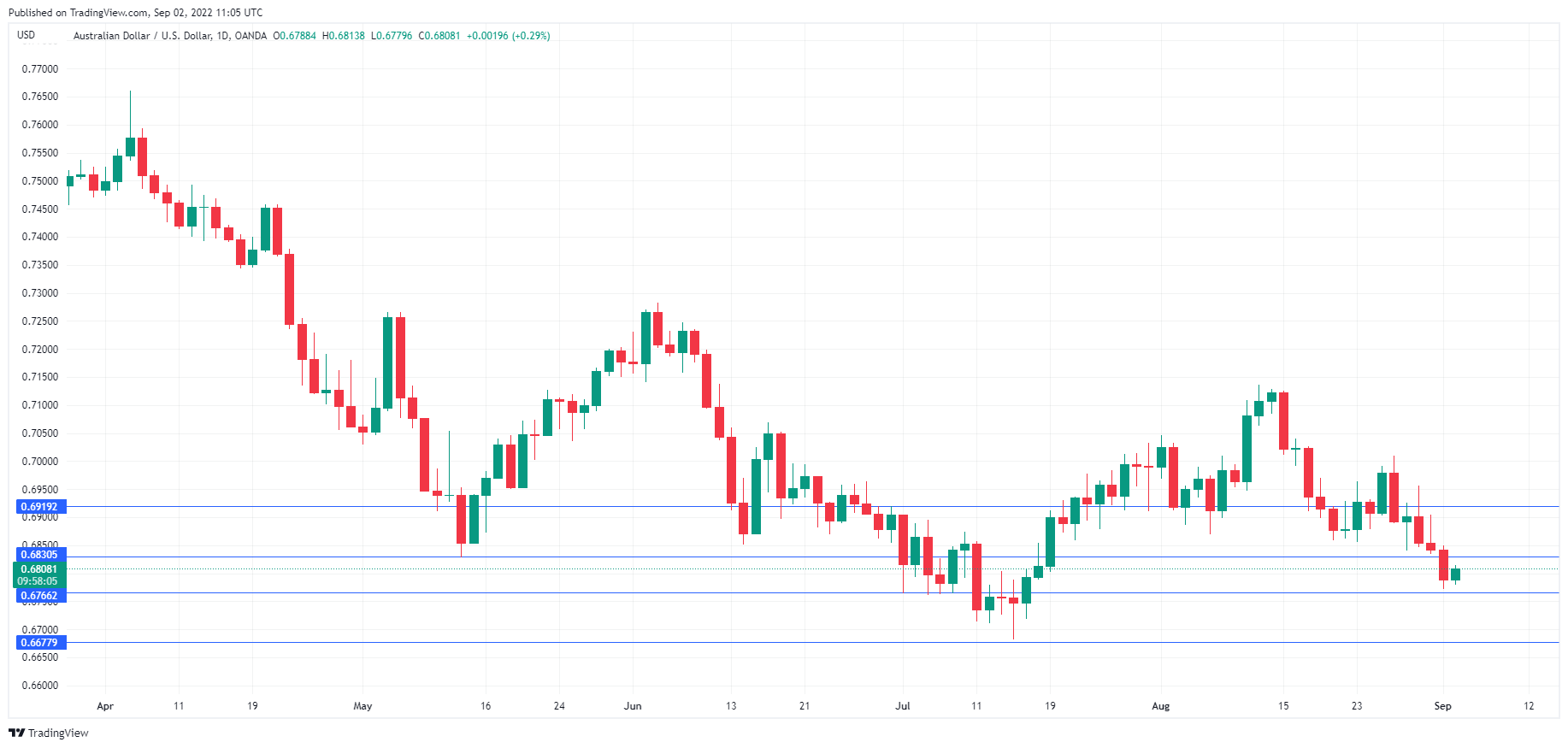After three straight losing sessions, the Australian dollar is in positive territory today. In the European session, AUD/USD is trading at 0.6802, up 0.21%.
It has been a rough stretch for the Australian dollar, which fell 2.89% in August. On Thursday, AUD/USD fell as low as 0.6771, its lowest level since July 15th. The Australian dollar is sensitive to risk and the black clouds hovering over Europe have sapped risk appetite and are weighing on the Aussie.
Russia shuts Nord Stream 1
The war in Ukraine has raised the price of energy and food imports for Australians and caused high inflation. Headline CPI rose to 6.1% in Q2, the highest level since 1990. The potential energy crisis in Europe has badly strained relations between Western Europe and Russia and dampened risk sentiment. Moscow has shut down the Nord Stream 1 pipeline for three days of maintenance, although Germany has charged that this is a pretense and the pipeline is fully operational. If the gas flow is not renewed on Saturday, we could have a full-blown energy crisis come Monday morning. In addition, The Federal Reserve’s hawkish policy, which finally has been internalized by the markets, has boosted the US dollar, which has made broad gains against the major currencies.
The RBA has its hands full with rising inflation and a slowing economy. Policy makers are hoping to avoid a recession and guide the economy to a soft landing, but the central bank, like the Fed, has made clear that its paramount goal is to curb inflation and avoid inflation expectations from becoming anchored. The RBA meets on September 6th and the markets have priced in a 0.50% hike, which would be the third consecutive 0.50% increase.
All eyes are on the US nonfarm payrolls report, which could result in volatility in the currency markets in the North American session. The markets are expecting a strong gain of 300 thousand, and a reading around this level would indicate that the labour market remains strong. This could push the US dollar higher, as the Fed is relying on a robust labour market to continue with sharp rate increases. However, a weak NFP report could weigh on the US dollar, as it would force the Fed to consider easing policy, which could mean a 0.50% hike in September rather than a 0.75% increase.
.
AUD/USD Technical
- 0.6830 is a weak resistance line, followed by resistance at 0.6919
- There is support at 0.6766 and 0.6677
Content is for general information purposes only. It is not investment advice or a solution to buy or sell securities. Opinions are the authors; not necessarily that of OANDA Business Information & Services, Inc. or any of its affiliates, subsidiaries, officers or directors. If you would like to reproduce or redistribute any of the content found on MarketPulse, an award winning forex, commodities and global indices analysis and news site service produced by OANDA Business Information & Services, Inc., please access the RSS feed or contact us at info@marketpulse.com. Visit https://www.marketpulse.com/ to find out more about the beat of the global markets. © 2023 OANDA Business Information & Services Inc.




